Android Phone Fans |
- Sony giving away the sexy Xperia T “Bond Phone” in new Skyfall contest
- iPhone 5 goes up against the Samsung Galaxy S3 in blender test [Video]
- ITC finds Samsung guilty of violating 4 Apple patents, Dutch court clears Samsung of violating multi-touch patent
- Yup, Verizon’s logo will be on the Note 2′s home button [VOMIT]
- Roller Coaster Tycoon coming to Android Q1 2013
- Win an LG Optimus G for AT&T! [GIVEAWAY]
- Sprint’s Samsung Galaxy S3 Jelly Bean rollout starts October 25th
- Samsung Galaxy Note 2 Review
- AT&T LG Optimus G review
- Samsung TecTile 3.0 brings enhanced NFC functionality
- Official Nexus 4 press render leaks
- T-Mobile Samsung Galaxy Note 2 goes on sale today
- New Commercial For MOGA Universal Android Controller Is Hilarious and NSFW (Sorta)
- Samsung, LG, and Pantech Prepare 1080p Smartphones For Early 2013 Launch
| Sony giving away the sexy Xperia T “Bond Phone” in new Skyfall contest Posted: 24 Oct 2012 06:44 PM PDT After officially announcing availability of the AT&T version of the Sony Xperia T/TL a few weeks back, Sony is now holding a contest that looks to give 1 lucky Android users a brand new Sony Xperia T “Bond Phone.” The promotion tied in with Sony Pictures’ upcoming James Bond film, Skyfall, has entrants watch a short clip from the movie, then after identifying the license plate of a car from clip, answering correctly to a single multiple choice at the end. Easy peasy. Wanna give it a shot? Hit the source link below for your chance to enter. Oh, and keep in mind this is the Xperia T (not the TL) and while this will work just fine on AT&T, LTE is pretty much out of the question. Good luck! |
| iPhone 5 goes up against the Samsung Galaxy S3 in blender test [Video] Posted: 24 Oct 2012 05:04 PM PDT Alright, we’ve all seen a few videos from around the webernets pitting the iPhone 5 against the Samsung Galaxy S3 in a series of drop tests. The results were almost always the same — when it comes to droppings, it’s really tough to beat Apple’s solid construction and superior build quality. But there’s still one challenge left untested: will it blend? As they so often do, Blendtec’s YouTube channel set to find out the answer to this question, placing both the iPhone 5 and Galaxy S3 inside separate blenders where they were sliced, diced, chopped and screwed into nothing more than smartphone mulch. Which device came out on top? Well, the answer may surprise you. Take a look. So as it turns out, Samsung’s mostly plastic construction on the S3 — a common complaint amongst Android enthusiasts — proved more resilient than the iPhone’s glass and metal. Who’da thunk it? Well, as you’ve no doubt learned from the history of the automobile, this is why we went from metal, to plastic bumpers. Aside from trying to save a few pennies, I’m beginning to understand why some Android OEM’s prefer plastic to metal. What do you think? |
| Posted: 24 Oct 2012 04:19 PM PDT Bad news for Samsung coming out of the International Trade Commission today. ITC Judge Thomas Pender found the South Korean manufacturer guilty of violating 4 Apple patents in a complaint filed by back in 2011. Originally 7 disputed patents, one was dropped by Apple, with another 2 being dismissed today. The patents now in question deal with a variety of UI interactions like switching applications, or scrolling up or down, as well as displaying a semi-transparent image on top of another. Yes, this is what it’s come to, folks. Now it’s up to the ITC’s full panel of judges to come to a decision in February on whether or not to uphold Jude Pender’s ruling. The alleged Samsung devices initially found guilty of violating Apple’s patents are the now ancient Captivate, Transform, Fascinate and Galaxy Tab. Also making headlines, a Dutch court has cleared Samsung of any wrongdoing dealing with Apple’s multi-touch patent. This isn’t the first time the Netherlands has ruled in favor of Samsung, rejecting Apple’s request to ban the Samsung Galaxy Tab last year. You may remember a small-ish Samsung victory from yesterday dealing with Apple’s ’381 bounce-back patent after the USPTO rejected the patent. Still far too early to begin popping bottles, the rejection doesn’t mean the patent was found invalid, and will still have to undergo further scrutiny under the reexamination process. [Reuters, 1, 2 | Bloomberg | TheVerge] |
| Yup, Verizon’s logo will be on the Note 2′s home button [VOMIT] Posted: 24 Oct 2012 02:56 PM PDT As great of a network as Verizon maintains I think we can all agree that they make some pretty questionable decisions in other areas. A while back, Verizon’s version of the Galaxy Note 2 leaked in a blurry cam photo, and in that photo we could all see a Verizon logo plastered onto the home button sticking out like a sore thumb. We’d hoped and prayed that the vomit-inducing monstrosity we were looking at was just a prototype, but nope — Verizon will definitely be putting its logo on the Note 2′s home button according to the press shots Samsung has released. Don’t get me wrong: I love Verizon’s logo and think it’s one of the best in cellular. But when you start putting it on places like the home button then things just become silly. What possible reason is there for needing it on one of the most important buttons the device has? The logo is already blown up on the back of the device, and most of us can live with that just fine. But why, Verizon? Why must you shoehorn the logo onto the device as if we’re going to forget which network we’re using it on? It, quite simply, looks tacky, out of place, and just downright wrong. I rarely gripe and moan about minor cosmetics, but this is one thing that I will detest until the cows come home. Let’s just hope they used a material and process that makes it easy to remove for the sake of all that is alive. If not, perhaps some decal love will be in order here. Perhaps I’m overreacting — after all, it doesn’t do anything to hurt the device’s functionality — but this move is so silly that it makes me a bit mad Verizon thought to do it in the first place. Let’s just thank the gods that they didn’t do anything to the S Pen (that we can see from the press shots, anyway). Are any of you feeling the same way? |
| Roller Coaster Tycoon coming to Android Q1 2013 Posted: 24 Oct 2012 02:39 PM PDT As a child I remember that my lowly computer could only run a handful of games. Oregon Trailer? Great. Solitaire? That’s a standard affair for anyone. But one of my absolute favorites had to be Roller Coaster Tycoon. This series is touted as one of the best collection of simulation games around, and now it looks like it’ll finally be headed to Android. Atari CEO Jim Wilson confirmed the game would be coming to Android starting sometime in Q1 of 2013. We imagine the original game is what we’re poised to get as the third, 3D edition of the game can be a bit taxing for some mobile devices, but Atari was not ready to confirm any of that. Regardless, the series has aged very well from a gameplay aspect, and while the first two titles might be a bit long in the tooth in terms of graphics they still have a certain charm to them that I think many of us still appreciate. Whether it be nostalgia or the traditional game mechanics that came with this 2D plane simulation fans will tell you that they wouldn’t mind taking a stroll back in time to take on the task of building up a theme park with rides, concessions, and custom roller coaster that you build. If you have never played the series, the premise is simple: you are given the task of creating a theme park with some sort of goal. You might be given a blank slate of land to start with and build up into a fun empire, or you might be asked to take the reigns of a failing theme park to try and get it into the black. Regardless of the objective the important thing is that you have total control over the park, from where your kiddie rides are right down to the prices of those pretzels and hot dogs people love to scarf down after vomiting all their lunch because of a wild ride on a roller coaster. This is very exciting news indeed, and you can bet we’ll be dying to get our hands on this game once it launches early next year. How much would you be willing to pay for one of the most important games in the history of the personal computer? |
| Win an LG Optimus G for AT&T! [GIVEAWAY] Posted: 24 Oct 2012 11:35 AM PDT Hot on the heels of our AT&T LG Optimus G review we’ve got another treat for you guys on this fine afternoon. Our friends over at AT&T have given us one of these units to give away to one lucky reader! Resident medieval enthusiast Edgar Cervantes said the device didn’t have any one dominating quality, but that it did a whole smorgasbord of things great. You’ll have to read the full review to see what that translates into, but see if you can’t find out yourself by trying your hand at this giveaway. The rules are short and the criteria is sweet: we want to know what you think makes the LG Optimus G as awesome a device as it is. Does the crisp 4.7 inch HD display dazzle you? Is it that exhilarating 1.5GHz quad-core Snapdragon Pro processor inside? How about the very solid 8 megapixel camera with lag-free shutter and Live Shot that’ll have you taking stunning shots? Or is it some of the new software features LG’s introduced with this device? Whatever it is, we want to hear it! Read below for a more detailed account of the rules and regulations:
And there you have it! Simple, right? There are a ton of great devices coming out this holiday season, and if the LG Optimus G wasn’t on your list of possibles then it should surely be there now. Good luck to everyone, and thank you for being the loyal Phandroid readers you’ve always been! Announced last week as part of the AT&T Unwrapped media event, the LG Optimus G is AT&T’s first LTE quad core smartphone and will be available on Nov. 2 for $199.99 with a two-year commitment. LG Optiums G is now available for pre-order by visiting AT&T here. |
| Sprint’s Samsung Galaxy S3 Jelly Bean rollout starts October 25th Posted: 24 Oct 2012 11:03 AM PDT When Samsung recently announced the Android 4.2 Jelly Bean update for the US carrier versions of the Galaxy S3 would arrive “in the coming months,” we wondered out loud just how many months we would have to wait. Not long, at least for Sprint subscribers. According to a newly leaked document, the update to Jelly Bean will commence tomorrow, October 25th, for GS3 handset’s on the nation’s third-largest wireless provider. More specifically, the update is to software build L710VPALJ7, which leaked only recently for Sprint’s Galaxy S3 phone. Users can expect the same updated TouchWiz experience that owners of the international Galaxy S3 have been receiving over the past several weeks, which includes features like Pop-up Play and “easy mode.” This also includes standard Android 4.1 enhancements like Google Now and the performance improvements of Project Butter. The update will rollout over the air, but Sprint’s internal memo says it should take a few weeks to reach all handsets. If you don’t get it first thing tomorrow, you might still be in for a short wait. [via XDA |Thanks to those who sent this in!] |
| Posted: 24 Oct 2012 10:17 AM PDT If the recent influx of smartphones with displays measuring over five inches is any indication, Samsung hit a chord with the Galaxy Note. Not to be outdone by the competition, Samsung is striking while the iron is hot with the release of a followup with an even bigger screen. The Samsung Galaxy Note 2 improves on the “phablet” concept in nearly every respect, and honed in stylus functionality makes for a unique experience, but is the form factor here to stay? Read on for the full review. HardwareThe Galaxy Note 2 is a monster. The phone features a 5.5-inch Super AMOLED display and measures in at 5.95 x 3.17 x 0.37 inches. Still, it somehow manages to both look and feel smaller than the original Galaxy Note. Chalk this up to Samsung’s decision to base the Note 2 on the design language of the Galaxy S3. This means rounded edges, soft curves, and an almost seamless construction. It also means we see the same materials in use, so while the phone definitely feels solid, the external casing is still comprised mostly of plastic. Back to that Super AMOLED display, it comes in at 720p and, unlike the GS3, does not rely on Pentile technology. This equates to a pixel density of 267 pixels per inch. As you might expect from a hi-res display bordering on the size of a tablet, the result was pretty impressive. This is a nice, crisp, bright screen with bold, rich color reproduction. The Note 2 is powered by Samsung’s quad-core Exynos 4412 processor clocked at 1.6GHz along with 2GB RAM, and interactions with the handset feel buttery smooth. You get all the trappings of a high-end device, otherwise, including an 8MP rear camera with LED flash, 1.9MP front-facing camera, NFC capabilities, and LTE capabilities depending on your network. We looked at the T-Mobile version, which obviously is not LTE-enabled. Instead, it relies on the carriers HSPA+ network. Samsung’s Galaxy Note 2 certainly has everything the most hardcore smartphone fan would want, but it’s a pretty freaking huge device. SoftwareOut of the box, the Galaxy Note 2 comes with Android 4.1.1 Jelly Bean along with Samsung’s TouchWiz UX. This is, for all intents and purposes, the same TouchWiz we saw with the GS3 (noticing a theme?) with a few additions tailored toward stylus interaction and a larger display. Included are features such as pop-up play (picture-in-picture mode for multi-tasking while viewing video), “easy” mode for Android beginners, and a number of other customizations including the ability to launch context-aware homescreens. This is most easily demonstrated by removing the stylus, which triggers a homescreen full of shortcuts and tools specific to Samsung’s S Pen. If there is one drawback to the software, it’s that between all of the OS customizations, the S Pen, and additional features, the Note 2 can feel a bit overwhelming. In some cases this was frustrating (figuring out certain useful stylus gestures), while in other cases, such as holding down the menu button to launch Google Now, the discovery was a pleasant surprise. A small but nice addition thanks to the extra screen real estate is the inclusion of a dedicated number row on the Note 2′s default software keyboard. The S PenA major element of the Samsung Galaxy Note 2 is the included S Pen, which resides tucked away within the main body of the phone. The Note 2 would probably be fine without it, but once you start using some of the S Pen’s unique abilities you likely won’t want to interact with the device without a stylus. It seems pretty intuitive, especially with features like AirView, which lets you to hover the S Pen over the display and still interact with the phone. AirView allows you to scroll through homescreens, web pages, or documents as well as do things you simply couldn’t do with your finger, such as previewing ahead in a video without interrupting the current playback position. The S Pen can be used to take a screenshot, crop any part of the current screen into a new note or clipboard element, as well as perform navigational shortcuts. And because the stylus is built on Wacom technology, we can’t forget that it’s actually a great tool for taking handwritten notes or doodling in your spare time. It is responsive and pressure sensitive to allow a bit of an artist’s touch to come through. CameraThe Galaxy Note 2′s camera sample speak for themselves, but when talking about the phone’s 8MP sensor with auto-focus, LED flash, and 1080p video capabilities perhaps it’s best to focus on some of the additional features Samsung has built into the software powering it. Samsung carries on with the additions that began with the GS3, providing modes such as Best Photo (choose the best image from a series of burst-shot photos), Best Face (similar to Best Photo, but as the name implies stitches together the photo with the best-looking headshots), and more. Regardless of the photo mode, the results were pretty solid all around. As is the case with most smartphone cameras, for every one picture that looks simply amazing you will probably get a few for the trashcan. This is no fault of the Note 2, but simply a reminder that a lot more goes into great photography than just having great tools. But the good news is, the Galaxy Note 2 can capture some pretty nice photos (and HD video as well). ConclusionTo answer the question from the beginning of this review, if the Galaxy Note 2 is any indication, the “phablet” is definitely here to stay. The Note 2 offers tons of functionality and deep levels of productivity in a sleek package. Sleek, however, does not mean small, and this will be a drawback for many. Features like the S Pen and its full range of interactions with the phone add to the Note 2′s charm, but f the stylus isn’t enough to justify the extra size, you might be better off picking up a Galaxy S3. The Note 2, however, makes a solid choice no matter how you slice it. |
| Posted: 24 Oct 2012 10:03 AM PDT
We have to give it to LG for stepping up it’s game this time around. Though it has great potential, the Korean manufacturer’s history hasn’t given it the best fame. We can clearly see the company has gone back to the drawing board this year, approaching the market with a much more solid plan, better devices and a new approach. On paper, the LG Optimus G has what it takes to take out many (if not all) of the devices listed above. The hardware is stunning, but we know it takes much more than a surprising list of specs to make a great device. So is this the phone that will lure you away from the top super phones? Will LG finally get closer to being in the top 3 list of Android manufacturers? I have spent some good quality time with this bad boy, so let’s jump in and see how it gives justice to its hype and specs. Build QualityI am a fan of HTC devices for one main reason – build quality. A well-built device can be recognized as soon as one picks it up for the first time. The LG Optimus G happens to be one of those phones, but not in a very different sense. LG seems to have found the perfect balance with its latest devices, with much better build quality compared to its past portfolios. The LG Optimus G is light and thin, but not as much as Samsung phones. Likewise, it is strong and feels solid, but not as much as HTC smartphones. In a way, it creates this illusion of being both light and thin, as well as strong. Probably due to the fact that its weight is very well balanced, making it feel very good in the hand. The device’s materials consist of glass, plastic and metal. It is not a uni-body design, but it definitely feels like nothing is loose or out of place. It is very well and tightly assembled. The power button on the right and volume rocker on the left don’t feel loose and give subtle but firm feedback when pressed.
Also, the Optimus G forgoes the advent of on-screen buttons for the traditional Back, Home and Menu capacitive buttons placed right under the screen. Some of you may love the on-screen butons a la the Galaxy Nexus, but I happen to like being able to get more screen real estate by pushing them out of the screen. DisplayWhat is a good device without a good display, right? The screen is what you interact directly with while using your phone every day; this makes it one of the most important factors in a good smartphone experience. The LG Optimus G definitely has what it takes to compete in this department, but this happens to be a very subjective topic. There is no denying it – the LG Optimus G has a gorgeous display. It sports a 4.7-inch True HD IPS+ display with a 1280×768 resolution. This translates to a 320 ppi (pixels-per-inch) pixel density and a 15:9 aspect ratio. The pixel density is impressive considering the iPhone 5 (known for its highly dense pixelation) sports 326 ppi. Letters are crisp, HD videos look great and the average person can’t see individual pixels with the naked eye. As for the aspect ratio, it may not fit the 16:9 standard, but the slightly wider screen may feel better. I always felt like 16:9 device are too thin and tall, and the black bars on the top and bottom while watching a movie are not thick enough to become bothersome. Colors may seem a bit washed out to those used to a Super AMOLED display (like me), but IPS+ displays offer natural and realistic colors. I prefer saturated colors and deep blacks, but I was very pleased with the Optimus G’s display after getting used to it. The blacks are nothing like the dark AMOLED ones, but I must say they are very close. And though the colors are not saturated, they feel very natural, bright, vibrant and pleasing to the eye. You get the “True-to-Life” viewing experience. PerformanceThe device’s titanic specs measure up to a rather pleasant and smooth experience. That 1.5 GHz quad-core Snapdragon S4 Pro processor and 2 GB of RAM make this phone scream! Anything you do in this device is going to be fast and with very high frames-per-second. I have seen no hiccups during my time with this phone. Not once has it slowed down (at least in the usual way — we will cover more in the Software section), and I haven’t seen a single force close. Pinch-to-zoom is fast, opening apps is fast, games load quickly and it is an overall a beast of an Android phone. This device is fast, guys. It will not disappoint in this department. SoftwareThis is an area in which the Optimus G has its ups and downs. The device does come with Android 4.0.4, which is simply unacceptable for a smartphone released during late 2012. To make matters worse, we have no news on a Jelly Bean update, and LG is not exactly famous for rolling out updates in time. We are sure this phone should at least get Android 4.1 in the near future, though; it certainly can handle it, and deserves it. Regardless, the older Android version is compensated with some custom UI features that could make your experience much more unique and exciting. Aesthetics As Android fans, we love vanilla Android. That is not to say there isn’t a warm and cozy place in our heart for a good manufacturer UI, though. Sometimes manufacturers can bring enhancements and features that slip through Google’s hands, mostly due to the fact that the Search Giant tries to keep the experience cleaner and simple. I must say that while I have always preferred vanilla Android, LG’s custom UI is not as obtrusive as it may seem. I certainly prefer it over Samsung’s TouchWiz; but then again, that is also a personal preference. But no one can deny LG’s UI has some helpful features you might grow to love. The lock screen has 4 customizable shortcuts and one can add a series of calendars and clocks to it (think of it like a widget in the lock screen). The pull-down notification area has quick settings buttons, which we have definitely seen before. These can be changed and re-arranged, though, making it more convenient based on personal needs. The app drawer is a bit of a lackluster in my opinion. It is not the best-looking, and it can be a bit bothersome at times. This is mostly because the apps follow no order, they are not automatically arranged in any order. One can manually arrange them, which would be a great feature for those that want their most used apps to be in the first screen, for example. But I prefer my apps in alphabetical order. Now, it is possible to hit the settings button and sort them by alphabetical or installation date order, but you have to sort them again when you download new apps (which get sent to the end of the grid). Repeating the process can become a bit tedious, so it would be an awesome treat if LG would let us organize the apps automatically. Looking at things on the brighter side, I do happen to like the settings menu. It is arranged in tabs, which allow you to jump between settings categories. There are four tabs on top: Networks, Sound, Display and General. I found it very convenient, easy and fast to be able to access different settings with LG’s tab view. And if it is not to your liking, you can easily switch to List View by pressing the menu button. And while we are talking about customization, the UI even lets you personalize your icons! Just press and hold any icon in your home screen and a little paint brush image shows up in the corner. Simply tap it and you can select an icon from the available options, your gallery or a picture taken with the device. Neat, right?! Unique Features We have already shown you a couple of LG’s features; one being QuickMemo and the other QSlide. QuickMemo allows you to take a screenshot of the device and writing/drawing on the image for quick sharing. QuickMemo can be accessed from the notification bar or by pressing volume up, volume down and the power button at the same time. You can also use it in Overlay Mode, which is the same idea, but one can jump out of the screen shot while keeping the writing over the UI. QSlide allows users to watch a video while they using other apps. Unlike Samsung’s Pop-Up Play, QSlide looks much like an overlay. It puts the video above the UI and one can then play with the opacity to make the video more/less transparent. Other important features include Live Zooming and Screen Zooming. The former allows users to zoom in on videos by using pinch-to-zoom. I rarely used it (outside of testing purposes), but it can be very helpful for looking at more detail while watching a video or movie. Screen Zooming might help those without the best vision, as it allows you to pinch-to-zoom on text messages and images to change the font and size of the subject. Those are the main features that separate the LG Optimus G from other devices. Some are gimmicks, but they definitely keep the device more interesting. I am particularly fond of QSlide and QuickMemo. I do wish QSlide would work with other apps like Youtube and Netflix, but that is outside LG’s power as those are not the company’s apps. Software Problems I did find a couple of small issues, though, which mostly seem software related. First, the screen would become a bit unresponsive at times, but not in a way that it won’t recognize touch. Take scrolling as an example — it would not stutter and jump while scrolling through apps, but suddenly scrolling would become slower. It’s as if it suddenly wasn’t registering the speed at which my finger was moving. The problem would go away after turning the screen off and on, though, making it feel more like a software bug. There also seems to be a small bug with the brightness. I always had automatic brightness and Eco-Mode off, but the brightness would sometimes go dimmer and come back to normal after a few minutes. This might be a feature as the Sprint version would usually not let you set the brightness too high when the device is hot, but it is still a bit annoying. CameraPicture/Video Quality The AT&T LG Optimus G doesn’t have the same stunning 13 MP camera the Sprint and international versions were blessed with, but its 8 MP camera still does the trick. As you may know, picture quality doesn’t depend much on megapixels and the sensor quality is much more relevant. More MP simply translates to a larger photo. With that in mind, we thought the Sprint and AT&T variants would be pretty similar in terms of picture quality, with the only difference being the size. During full daylight both cameras perform magnificently. The pictures are clear and colors are bright, though sometimes both versions can take some blurry photos (especially when moving or shaking). The only main difference is that the 13 MP pictures look clearer when you zoom in, but that is obviously due to the higher megapixels. (See our comparison post.) In terms of quality they are almost identical. We would have to say the picture quality is still not up there with the HTC One X or Samsung Galaxy S3, but it is definitely getting close. And yes, that is saying much considering the fact these phones challenge many point-and-shoot cameras. We realized there is much more of a difference between the AT&T Optimus G’s camera and the others though. When the sun goes down and you start taking pictures in dim and low-light conditions. There is much more than mere megapixels that separate these devices’ cameras. We found that the 13MP sensor in the Optimus G took better pictures in dimly lit rooms (artificial lighting), with much crisper images and more accurate colors. The AT&T version did perform better for outdoor night-time photography, though. Video quality is much better. The device does record at 1080p full HD, and the image is very crisp, clear and records at a very good frame rate, so you won’t be disappointed with your home videos and party movies. Features But let’s get past quality and jump to other features. Chances are you won’t be comparing pictures with those of other devices, and the AT&T Optimus G does very well on its own merits. The software does come with some features that may improve your experience while using the camera. I found Panorama and Time Catch Shot modes to be the most exciting. The first does the obvious, but the latter feature is a bit more exciting. It actually saves a few images of what happens BEFORE you press the shutter button. Ever miss that perfect picture because you didn’t pull out your phone fast enough? Well, with Time Catch Shot you are able to retrieve those lost moments most times. Quite impressive, I must say – even though many times they pictures can be a bit blurrier than one would hope. I felt like Continuous Shot performs better in terms of quality (this mode is pretty much burst shot mode, but limited to 6 shots at a time). There is also HDR mode but it is seriously underwhelming, especially for those of us who are used to seeing professional HDR photography. It seriously looks like any other picture, except with a bit better colors and highlights. Oh, and there is also Cheese Shutter, which takes a picture when the phone detects someone saying “cheese” (other words also work; like whisky, LG and smile). That one is pretty fun for parties and pictures of the kids. 1.3MP Front-Facing Camera The 1.3MP camera in the front serves its purpose. It is great for video chats and casual self-portraits. The video is very good with a 720p HD resolution, as well. Is It a Good Camera Phone? Overall, the camera is good on its own. Some features are fun and helpful, but I felt like many of them took bad photos; hence, defeating the purpose. And if they didn’t there was not much of a difference from “normal” mode, with panorama being an obvious exception. You are better off manually playing around with the settings if you know a bit about photography.        Sound QualityAs a personal media device, the phone performs well. I have definitely heard better, but sound quality is something one usually has to give up when purchasing any thin device (whether it is a TV, tablet or smartphone). The volume is loud; it won’t “fill up the room”, but you can definitely hear the sound and enjoy it from afar.
But if you can put all the technicalities aside and don’t “have an ear” for these details, the Optimus G will please you. The sound is loud enough to be enjoyed under most circumstances, and the quality is good for the average movie and song. Ports & ConnectivityThe most important differentiation for the Optimus G is the fact that it has a microSD slot, which the Sprint version lacks. Sprint’s Optimus G has a better camera, though, so the choice is yours: better camera or expandable memory? Everything else packed in this phone has what one can expect from any high-end smartphone – LTE connectivity, GPS, Bluetooth 4.0+LE, WiFi 802.11 a/b/g/n and NFC. They all work as they should; GPS locks quickly, WiFi is fast and doesn’t lose connection, and NFC works with tags and Beam. The only issue I found is that LTE is a bit spotty, but that may be due to my area and isn’t the device’s fault. Battery LifeOn average, battery life is surprisingly good. I happen to live in a spotty area for AT&T, so the device was spending a lot of energy jumping in and out of HSPA+ and LTE, but when those problems were out of the way I averaged about 10-12 hours on a single charge. This is without trying to conserve battery. I did try to use Eco Mode for a while, which conserves battery by dynamically managing processor power, but I honestly didn’t see much of a difference. It might have helped a little, but it wasn’t a drastic enough change to be noticed (in terms of both performance and battery life). What did make a change is the use of WiFi, though. Now that my battery tests are over and I turned WiFi on, the device is sitting at 63% after a bit over 9 hours of use. With that said, the device does offer the battery life and efficiency LG promises. We wish the 2100 mAh battery was a bit beefier since the device doesn’t have a removable battery, but that is another sacrifice one has to make for a thin, good-looking smartphone. ConclusionAll in all, the LG Optimus G is an awesome device, but we have to keep in mind it is competing with the highest-end devices of late 2012. With that in mind, we can confidently say this is among the top 4 smartphones to get – a great accomplishment for LG. The performance, display and design are simply stunning, but like every other device, it has its downsides. The camera could be better (it doesn’t quite match the HTC One X+ and Galaxy S3 yet), like the one in the Sprint version, but LG makes up for it by adding a microSD card slot. It is a matter of choice, and I happen to prefer expandable storage over a good camera. Software is also a bit outdated featuring Ice Cream Sandwich, but you can find a good series of custom UI features that may make up for the lack of Jelly Bean. And though it has some software bugs, we can expect LG to fix them with an OTA update.
This is actually a good place to be in, as the device isn’t polarized and tucked into a specific niche. It takes part of all the best features from the competition and mixes them into one all-around great smartphone. What makes the LG Optimus G stand out is it’s overall quality as a smartphone, not any specific features. It is well-sized (at least for today’s standards), thin and light, its performance is astounding, it has a great screen and the build quality is solid. And for those that still make calls regularly, voice quality was crisp and clear from both ends and I didn’t have a single call dropped. Software is a give or take, but it is definitely better than TouchWiz. Plus, if you want to cover that small downside, you can always wait for that rumored LG Nexus, which is said to be a Pure Google device based on the Optimus G. It would be perfect for those that simply want a good high-end device on AT&T, without all the extravagant bells and whistles that may make it gimmicky. If you find this is the phone for you, it will be available straight from AT&T on November 2nd. Pre-orders did open on October 16, though. You can put your name on an LG Optimus G right now if you go to AT&T’s website! |
| Samsung TecTile 3.0 brings enhanced NFC functionality Posted: 24 Oct 2012 08:51 AM PDT One of the bigger quirks that came with owning a Samsung device was Samsung TecTiles. TecTiles are NFC tags that users can place around their home and office to automate certain tasks on their phones. For instance, if I wanted to turn my GPS on, Bluetooth on, WiFi off, and turn my ringer volume up on my phone when leaving the house I could tap my phone on an NFC tag next to the door and have all this done automatically and effortlessly. Well, Samsung’s improving on the experience with the announcement of TecTiles 3.0 this morning. One of the biggest features will be the addition of profiles. Instead of having to buy multiple TecTiles for multiple people, profiles will allow people to have a different set of actions for one TecTile. For instance, if your wife prefers to have her navigation app launched and have her Bluetooth radios turned on while you would rather have a music app launch and dial your voicemail, both of you can have your cake and eat it on the same TecTile. Other changes include the ability to keep a history of the actions you program for TecTiles, create private TecTiles that only your phone can use, and unlock TecTiles or clear a TecTile without having to write over the previous command. As for what TecTiles can manipulate on your phones, there is now support for Foursquare, LinkedIn, Facebook, Google+, Google Talk, Glympse, and Google Places. It will let you play a specific track and pause/play in the music player. It will even forward a call, edit or share electronic business cards, and send a pre-written email to whatever email addresses you specify. We’ve always been excited for NFC, and while mobile payments are great there was a very huge void in other use cases. Samsung’s TecTiles have no doubt been the most ambitious use of NFC yet, and things have only gotten better with this update. As for availability, it looks like you won’t even have to get new TecTiles (though they’re $15 for a pack of 5 at your local carrier or Samsung.com if you need to buy some) — all you’ll need to do is upgrade the Android app by heading to the Google Play Store.
|
| Official Nexus 4 press render leaks Posted: 24 Oct 2012 07:02 AM PDT We’ve had just about all the blurry cam action we can take when it comes to the upcoming Nexus 4 by LG, and we’re ready for the real deal to make its way to the news wire once Google unveils it October 29th. We’ve got something a bit better until then, though — official press renders! It doesn’t show us much more than we’ve already seen, but it does give us a more clear look at what to expect from the design once it launches. Most photos have been inconsistent as far as showing how that back panel is supposed to look, but these shots do well to confirm that “glittery” look that you may or may not like. One interesting thing to note is that this press render has a nice, big “Nexus” logo on the back as opposed to the Google logo we’re used to. Google started going this route with the Nexus 7 but we weren’t sure if this would change on the phone side of things. Beyond that it looks like the same device we’ve been analyzing and scrutinizing since the beginning of time, and we look forward to getting our hands on the real thing next week Monday. As for this particular render there are a few odd things to note. For starters, the time stamp is in the middle of the notification bar and not on the right, as usual. There are also some odd notifications which possibly show off the weather, but two different notifications with the number “92″ seems weird and redundant. With all of the tomfoolery going on with hoaxes these days it’s always important to remember that this could be totally fake, but the source is one of the most trustworthy in the blogosphere. Be sure to swing back here for everything Nexus as Google is expected to drop a smorgasbord of devices and announcements, including a possible 10 inch Nexus device made by Samsung and news of a 32GB configuration making its way to store shelves in place of the 8GB version. [via @Evleaks] |
| T-Mobile Samsung Galaxy Note 2 goes on sale today Posted: 24 Oct 2012 06:35 AM PDT We’ve had more than enough reason to believe T-Mobile would be launching its version of the Samsung Galaxy Note 2 today, but it was never official. That has changed this morning, however, as T-Mobile has announced immediate availability of the device throughout all channels. Magenta is selling the device for $250 if you’re on one of their value plans (where you’ll technically be paying a down payment for the device with $20 installments for 20 months, or the difference of the phone if you decide to get a new phone early). Things get a little bit more tricky if you’re looking to get this thing on its classic plans with a new two-year contract, though — at $370 (after a $50 mail-in rebate) you’ll actually be paying a fair bit more for the device out of pocket compared to AT&T and Sprint’s $300 after rebate. We’re not sure if this is a play to get people onto its value plans or not, but it certainly seems like it. It’s an odd move considering T-Mobile doesn’t have any 4G LTE radios to bring the price up, and the 16GB option is the only one that’s being offered at this time. Price shock aside, though, this is still a great phone. It’ll sport a 5.5 inch Super AMOLED HD display, a 1.6GHz quad-core Exynos processor, 2GB of RAM, an 8 megapixel camera with 1080p video recording, a 2 megapixel front-facing camera, Android 4.1, Samsung’s S Pen technology, and more. It’s no doubt one of T-Mobile’s most exciting devices available so we’re sure many of you will still find a way to get your hands on it despite the odd pricing. There are a couple of other Magenta-exclusive bells and whistles to be minded on the software side of things. For starters, you’ll get a free version of Need for Speed Most Wanted, though it appears you’re only getting four free events with the option of paying to unlock more. And the game will be optimized for the MOGA controller, though we’re not sure if MOGA support is exclusive to this T-Mobile exclusive version of Most wanted. If you can get down with the pricing and you’ve been waiting for this device you can head over to T-Mobile.com to get started, or head to your local T-Mobile store to buy one in person. |
| New Commercial For MOGA Universal Android Controller Is Hilarious and NSFW (Sorta) Posted: 23 Oct 2012 08:44 PM PDT We already gave you guys our quick hands-on with the MOGA universal gaming controller a few weeks ago at CTIA/MobileCON 2012 and we were generally pleased with the Android accessory (wasn’t too excited about having to pop in 2 AA batteries though). Where the MOGA itself is a great product, it’s the company’s newly uploaded commercial that’s creating some buzz around the nets, simply for it’s genius way of featuring the MOGA in a variety of real world situations (I’m almost positive Mitt Romney makes a brief appearance in the vid). I wouldn’t exactly label this NSFW — but it may not be entirely work appropriate. Fair warning. Sounds a lot like my mother whenever she plays Angry Birds on her T-Mobile G2X. You guys don’t game like that… do you? |
| Samsung, LG, and Pantech Prepare 1080p Smartphones For Early 2013 Launch Posted: 23 Oct 2012 07:38 PM PDT When it comes to Android manufacturers, competition is fierce. A modern day capitalist arms race, one could even argue the “spec wars”are maybe advancing mobile technology too fast. With the announcement of the Japanese HTC Butterfly J and its almost ridiculous full HD 1080p 5-inch display, the rest of the Android world said it’s game on. According to MK News, Samsung, LG, and Pantech are next in line to introduce the new round of high-end Looks like the Korean OEM’s will bringing the pain next year, and now we’ll have to wait for chipset makers to introduce new and more powerful CPU’s to push all those pixels. But what say ye? Are you guys excited for 5-inch 1080p devices? Does it even matter? Are your eyes even special enough to distinguish the new “unseeable” pixel density? |
| You are subscribed to email updates from Android Phone Fans To stop receiving these emails, you may unsubscribe now. | Email delivery powered by Google |
| Google Inc., 20 West Kinzie, Chicago IL USA 60610 | |


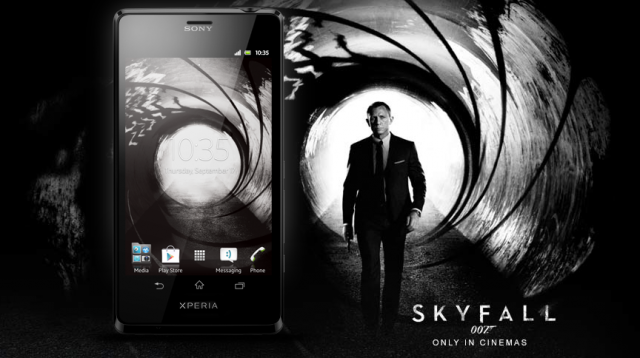



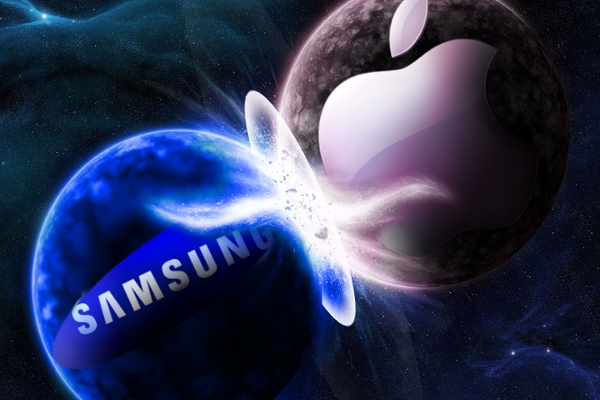

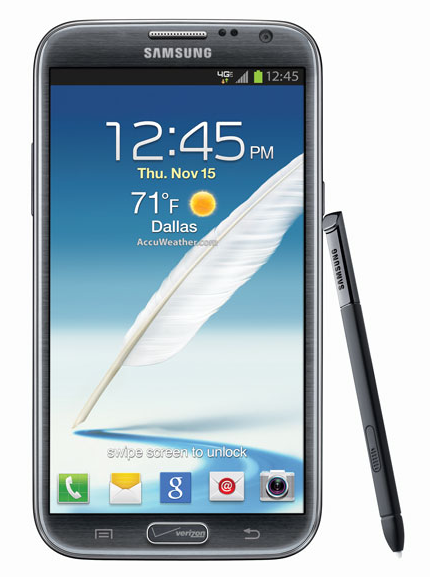



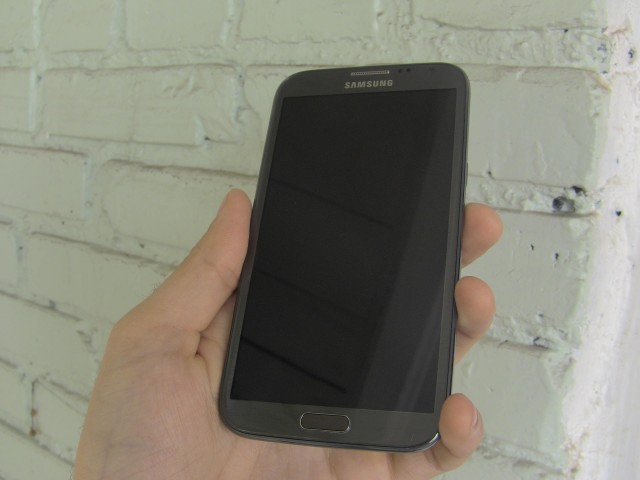




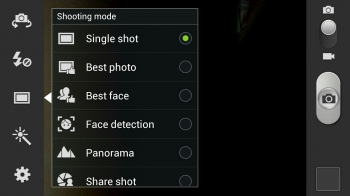




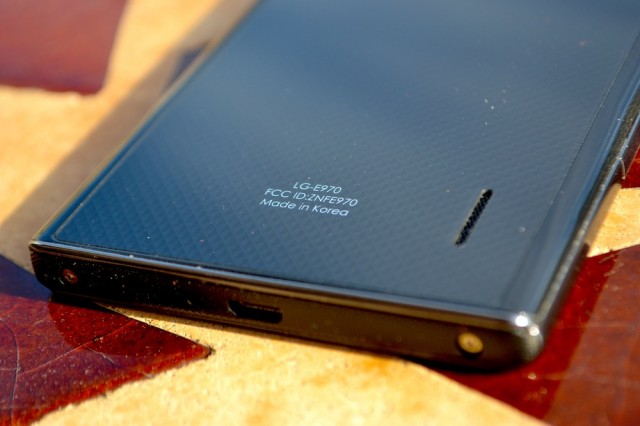
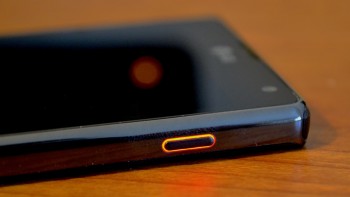



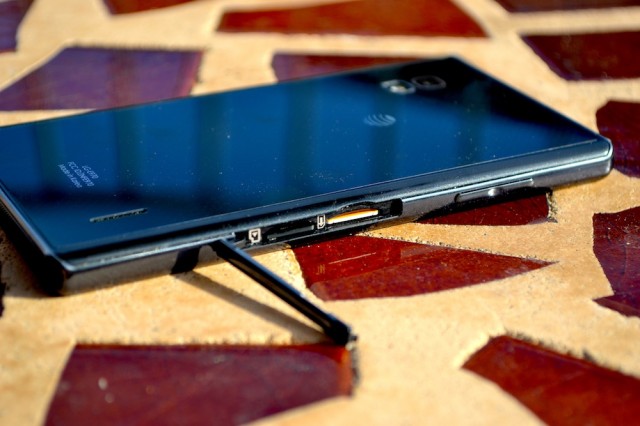


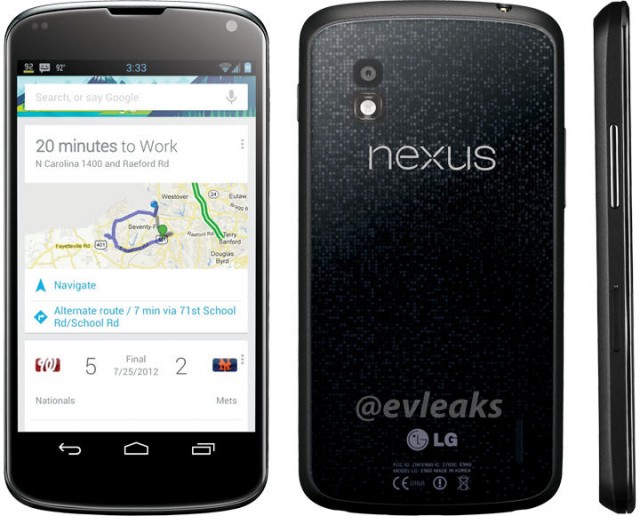





No comments:
Post a Comment